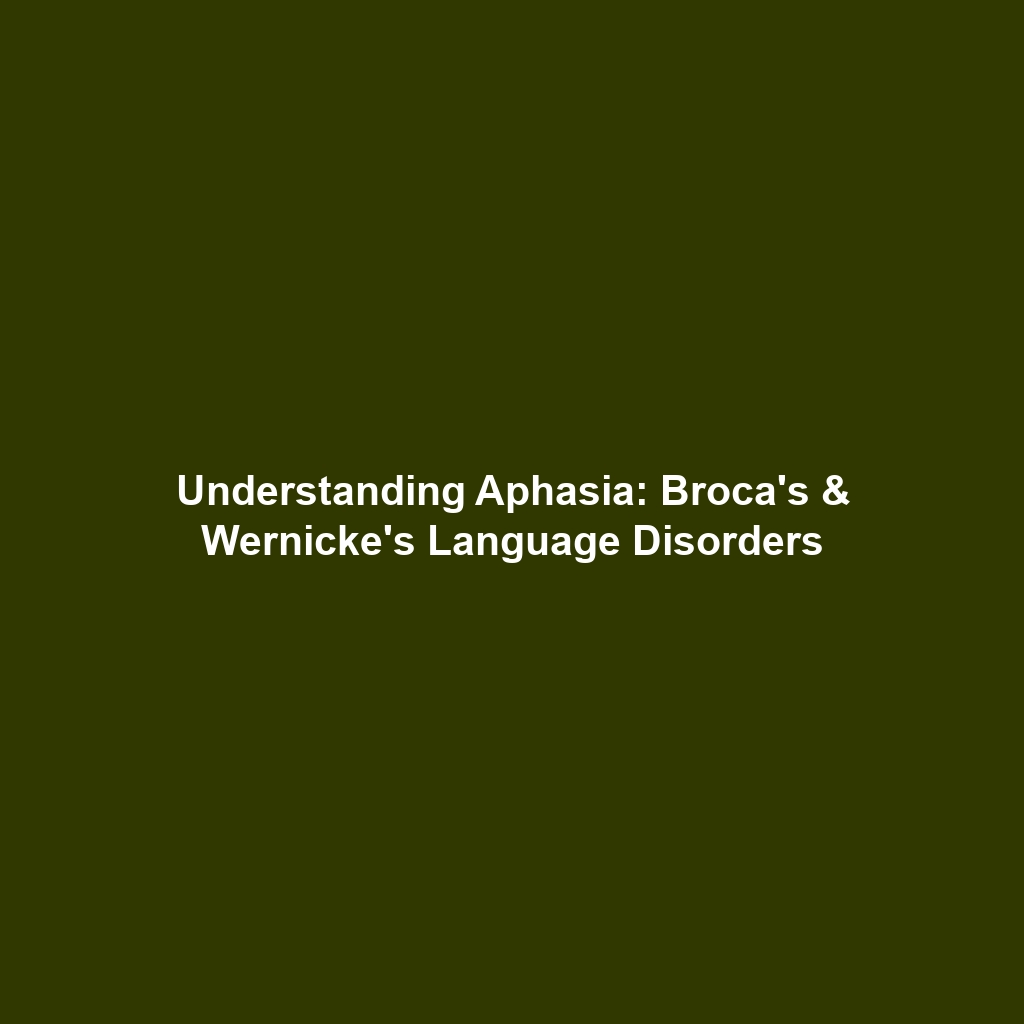Aphasia: Disorders of Language Processing in the Context of Biomechanics
Category: Biomechanics
Introduction
Aphasia is a complex disorder characterized by impaired language processing, impacting communication abilities. This neurological condition can manifest as Broca’s aphasia, which causes difficulty in speaking, or Wernicke’s aphasia, marked by challenges in understanding language. Understanding aphasia is crucial as it sheds light on the intricacies of human communication and its neurological underpinnings. Within the broader context of biomechanics, studying aphasia not only reveals how language processing interacts with brain mechanics but also highlights the significance of biomechanics in developing effective rehabilitation techniques.
Key Concepts
Aphasia and Its Types
Aphasia is categorized mainly into two types, each presenting unique challenges:
- Broca’s Aphasia: This form of aphasia primarily affects speech production. Individuals often know what they want to say but struggle to articulate their thoughts fluently.
- Wernicke’s Aphasia: In contrast, this type impacts comprehension. Affected individuals may produce fluent speech that lacks meaning and struggle to comprehend spoken or written language.
The Biomechanics of Language Processing
Biomechanics plays a vital role in understanding how language is produced and comprehended. It encompasses the study of mechanical principles applied to biological systems, including the brain’s functions. Insights into the biomechanics of articulation, phonation, and cognitive processing allow for a better grasp of the physical and physiological challenges faced by individuals with aphasia.
Applications and Real-World Uses
The study of aphasia has significant implications within biomechanics, particularly in clinical settings. Here are some key applications:
- Speech Therapy: Techniques derived from biomechanical research are utilized in speech therapy to develop personalized rehabilitation programs for individuals with aphasia.
- Assistive Technologies: Innovations in biomechanics have led to the creation of devices that assist individuals in communicating when traditional speech is impaired.
Overall, understanding how aphasia is addressed through biomechanics aids in devising more effective treatments and interventions.
Current Challenges
Despite advancements, several challenges remain in studying and applying aphasia within biomechanics:
- Complexity of Language Processing: The multifaceted nature of language processing makes it difficult to create standardized assessments and interventions.
- Individual Variability: Variability in brain injury and recovery among individuals can lead to inconsistent outcomes in treatment effectiveness.
- Integration of Disciplines: Collaboration between linguistics, neuroscience, and biomechanics is often limited, hindering comprehensive approaches to treatment.
Future Research and Innovations
Looking ahead, several innovations hold promise for enhancing the understanding and treatment of aphasia in the context of biomechanics:
- Neurotechnology: Advancements in neuroimaging and neurofeedback could provide deeper insights into the brain processes involved in language.
- Robotics: The use of robotics in rehabilitation is expected to evolve, offering personalized interaction experiences aimed at language recovery.
- AI in Speech Therapy: Artificial intelligence systems are being developed to assist in speech therapy, adapting in real-time to patients’ needs.
Conclusion
Aphasia represents a significant domain of study within biomechanics, providing insights that are essential for developing effective interventions and enhancing understanding of language processing disorders. Understanding the interplay between biomechanics and aphasia not only improves therapeutic practices but also contributes to constructing comprehensive rehabilitation strategies. To learn more about related topics and explore further, consider visiting our additional resources on language processing disorders and biomechanical applications in therapy.
